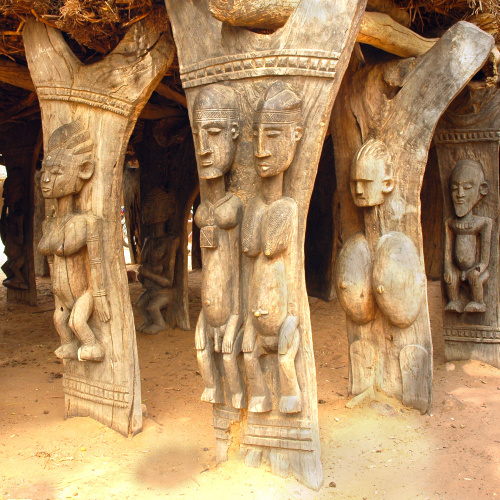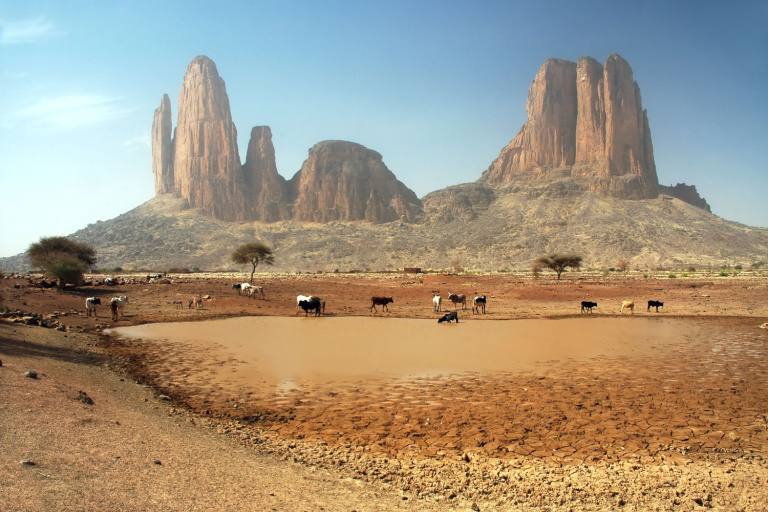
trevor kittelty/Shutterstock
When Is the Best Time to Visit Mali?
The best time to visit Mali is during the cooler, dry season from November to February. During these months, the weather is more temperate, with average temperatures ranging from 70 to 90 degrees Fahrenheit, making it ideal for exploring Mali’s diverse landscapes and cultural sites.
Tourist numbers are lower in this period, allowing for a more intimate experience of Mali’s rich cultural heritage and natural beauty. This is also the best time for river cruises on the Niger River, as water levels are favorable.
Visiting Mali during the hot season from March to May can be challenging, with temperatures often soaring above 100 degrees Fahrenheit, especially in the north. This period sees fewer tourists, but the extreme heat can be uncomfortable.
The rainy season from June to October brings cooler temperatures but also presents travel challenges due to heavy rains, especially in the south. This period sees lush landscapes, but some regions may be inaccessible due to flooding.
Here’s a detailed breakdown of Mali’s weather by season:
- Cool Dry Season (November to February): Temperate weather, with average temperatures ranging from 70 to 90 degrees Fahrenheit. Ideal for travel and exploring.
- Hot Season (March to May): Extreme heat with temperatures often exceeding 100 degrees Fahrenheit. Fewer tourists.
- Rainy Season (June to October): Cooler temperatures but heavy rains can cause travel difficulties. Lush landscapes but potential flooding in some areas
Regardless of when you visit, Mali offers a captivating experience with its unique cultural heritage, historic cities like Timbuktu and Djenné, and the majestic Niger River. Remember to prepare adequately for the season and enjoy the rich experiences that Mali has to offer.
 Average Temperatures by Month
Average Temperatures by Month
|
Jan |
Feb |
Mar |
Apr |
May |
Jun |
Jul |
Aug |
Sep |
Oct |
Nov |
Dec |
| Fahrenheit |
74°
|
79°
|
86°
|
93°
|
98°
|
101°
|
100°
|
98°
|
95°
|
90°
|
80°
|
75°
|
| Celsius |
23°
|
26°
|
30°
|
34°
|
37°
|
38°
|
38°
|
37°
|
35°
|
32°
|
27°
|
24°
|
Climate in Mali
Summer Season in Mali
Mali's summer season, from June to September, is characterized by hot and dry weather with temperatures often exceeding 100°F. This is the hottest time of the year, making outdoor activities challenging. It's crucial to stay hydrated and protected from the sun. This season is less popular for travel due to the extreme heat.
Rainy Season in Mali
Mali's winter season, from November to February, offers milder and more comfortable temperatures, ranging from 68°F to 86°F. It's a great time for outdoor adventures, exploring the country's unique landscapes, and experiencing traditional festivals.
Winter Season in Mali
Mali's winter season, from November to February, brings milder and more pleasant temperatures, ranging from 68°F to 88°F. This is the ideal time for exploring the country's historical sites, including the ancient city of Timbuktu and the Great Mosque of Djenne. It's also a more comfortable period for outdoor activities, such as trekking and visiting national parks.
Our Recommendations
| Destination |
Jan |
Feb |
Mar |
Apr |
May |
Jun |
Jul |
Aug |
Sep |
Oct |
Nov |
Dec |
| Mali |
 |
 |
 |
 |
 |
 |
 |
 |
 |
 |
 |
 |






